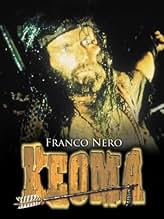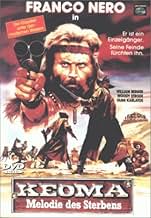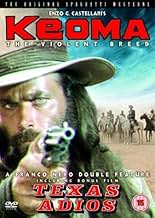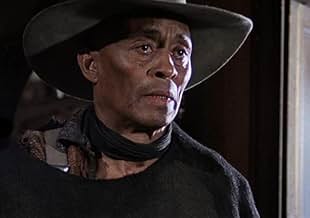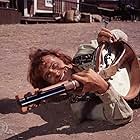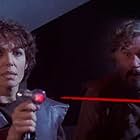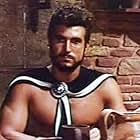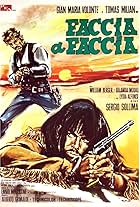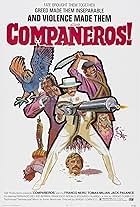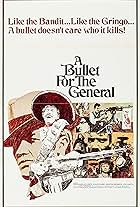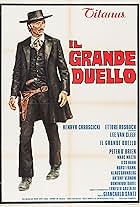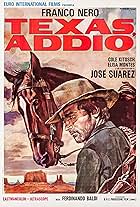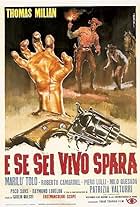IMDb RATING
7.0/10
6.4K
YOUR RATING
An ex-Union gunfighter attempts to protect his plague-ridden hometown from being overridden by his racist half-brothers and a Confederate tyrant.An ex-Union gunfighter attempts to protect his plague-ridden hometown from being overridden by his racist half-brothers and a Confederate tyrant.An ex-Union gunfighter attempts to protect his plague-ridden hometown from being overridden by his racist half-brothers and a Confederate tyrant.
Joshua Sinclair
- Sam Shannon
- (as John Loffredo)
Donald O'Brien
- Caldwell
- (as Donald O'Brian)
Leonardo Scavino
- Doctor
- (as Leon Lenoir)
Antonio Basile
- Member of Caldwell's Gang
- (uncredited)
Giovanni Bonadonna
- Member of Caldwell's Gang
- (uncredited)
Armando Bottin
- Member of Caldwell's Gang
- (uncredited)
Aldo Canti
- Horseman
- (uncredited)
Domenico Cianfriglia
- Member of Caldwell's Gang
- (uncredited)
Storyline
Did you know
- TriviaThe story line of the film was mostly improvised at the same time as the film was made. The original story treatment was written by Luigi Montefiori (aka George Eastman) and turned into a script by Mino Roli and Nico Ducci, but director Enzo G. Castellari didn't like what had been written by the latter two. Because of problems with the schedule, Castellari and actor Joshua Sinclair wrote the script for the next day every evening after filming of the day. Castellari was also open to suggestions from the cast and crew - Franco Nero has confirmed that he wrote some of his own dialogue.
- GoofsAt 7:08 riders on horseback in pursuit of two men running on foot fire their pistols. Both men on foot react as if hit by the first shot.
- Alternate versionsGerman version was cut for violence and pacing reasons by 8 minutes to secure a "not under 16" rating. Despite that, it still got put on the index list by the BPjM which means various sales and advertising restrictions. Fortunately in 2003, the movie was removed from the index list and the FSK granted the uncut version a "not under 16" rating.
- ConnectionsFeatured in L'Oeil du cyclone: Westernissimo (1995)
- SoundtracksKeoma
(uncredited)
Music by Guido De Angelis & Maurizio De Angelis
Lyrics by Susan Duncan Smith and Cesare De Natale
Performed by 'Sibyl Amarilli Mostert' and Cesare De Natale (as Sybil & Guy)
Featured review
Castellari's Keoma was part of the late 1970's second wave of spaghetti westerns. It is typically considered one of the better entries in the genre, some even rate it as a classic alongside Leone's masterpieces. However, while it has clearly been attempted to make the film look stylish and sophisticated, and at a casual glance it does look pretty well made, a more in depth look shows that it falls quite a long way off the mark.
Basically, it's clear that what Castellari has is a bunch of director's tricks up his sleeve - slow motion, unconventional camera angles, subtle merges into flashbacks and so on - all of them thieved from the work of other filmmakers. That in itself is no bad thing - after all Tarantino has made a career out of doing the same - but the difference is that Castellari clearly has no idea how and when to use these techniques. He simply throws them in at every opportunity, so that they actually stick out rather than enhance the film. The most obvious example is the Sam Peckinpah style slow motion deaths after someone is shot. In Peckinpah's films it was used skilfully to highlight the brutality of certain killings here and there throughout the movie. In Keoma it is used more or less every time someone is shot - about forty or fifty altogether - totally losing any impact it might have had.
Add to this that Keoma is a completely boring spaghetti western character - basically just a hippy with a colt - and not one of Franco Nero's better performances. The dialogue is terrible. The plot is text book spaghetti western back-for-revenge. This movie doesn't really have a lot going for it.
And then there is the music, famous itself among spaghetti western fans for being almost unlistenably bad, which seems to sum up the feeling of the entire film. Quite a nice melody, but either sung in a piercing shriek by the female vocalist or an unnerving growl by the male vocalist.
In short Keoma is a perfect example of style over substance - it's all dazzling flair in an attempt to cover up a pretty poor film. Viewers should stick to the real classic spaghettis like Sergio Leone and Sergio Corbucci's work.
Basically, it's clear that what Castellari has is a bunch of director's tricks up his sleeve - slow motion, unconventional camera angles, subtle merges into flashbacks and so on - all of them thieved from the work of other filmmakers. That in itself is no bad thing - after all Tarantino has made a career out of doing the same - but the difference is that Castellari clearly has no idea how and when to use these techniques. He simply throws them in at every opportunity, so that they actually stick out rather than enhance the film. The most obvious example is the Sam Peckinpah style slow motion deaths after someone is shot. In Peckinpah's films it was used skilfully to highlight the brutality of certain killings here and there throughout the movie. In Keoma it is used more or less every time someone is shot - about forty or fifty altogether - totally losing any impact it might have had.
Add to this that Keoma is a completely boring spaghetti western character - basically just a hippy with a colt - and not one of Franco Nero's better performances. The dialogue is terrible. The plot is text book spaghetti western back-for-revenge. This movie doesn't really have a lot going for it.
And then there is the music, famous itself among spaghetti western fans for being almost unlistenably bad, which seems to sum up the feeling of the entire film. Quite a nice melody, but either sung in a piercing shriek by the female vocalist or an unnerving growl by the male vocalist.
In short Keoma is a perfect example of style over substance - it's all dazzling flair in an attempt to cover up a pretty poor film. Viewers should stick to the real classic spaghettis like Sergio Leone and Sergio Corbucci's work.
- How long is Keoma?Powered by Alexa
Details
Contribute to this page
Suggest an edit or add missing content



